√99以上 y=e^x(acosx bsinx) 138361-Differential equation of y=e^x(acosx+bsinx)
How do I express y=acosxbsinx in the form y=Rcos(xc)?Form a differential equation for the curve equation y = e^x(Acosx Bsinx) Maths Differential Equations NCERT Solutions;How to solve The solution of (D^21)y=0 is (a) y=(AxB)e^x (b) y=AcosxBsinx (c) x=(AyB)e^y (d) y=Ae^xB/e^x By signing up, you'll get

Pdf 0 Differentiation Rules 3 1 Derivatives Of Polynomials And Exponential Functions Hae Ri Han Academia Edu
Differential equation of y=e^x(acosx+bsinx)
Differential equation of y=e^x(acosx+bsinx)-Ordinary Differential Equations 1 Introduction A differential equation is an equation relating an independent variable, eg t, a dependent variable, y, and one or more derivatives of y with respect to t dx dt = 3x y2 dy dt = et d2y dx2 3x2y2 dy dx = 0Acosx Bsinx Evaluating at x 0, we find that A 4 Differentiate, getting y x Asinx osx, and evaluating at x 0, we find B 1 Thus the solution is y x 4cosx sinx 175 Chapter 12 Second Order Linear Differential Equations 176 The reason the answer worked out so easily is that y1 cosx is the solution with the particular initial values y1 0 1 y1 0 0 and y1 sinx is the solution with y1 0 0 y1 0
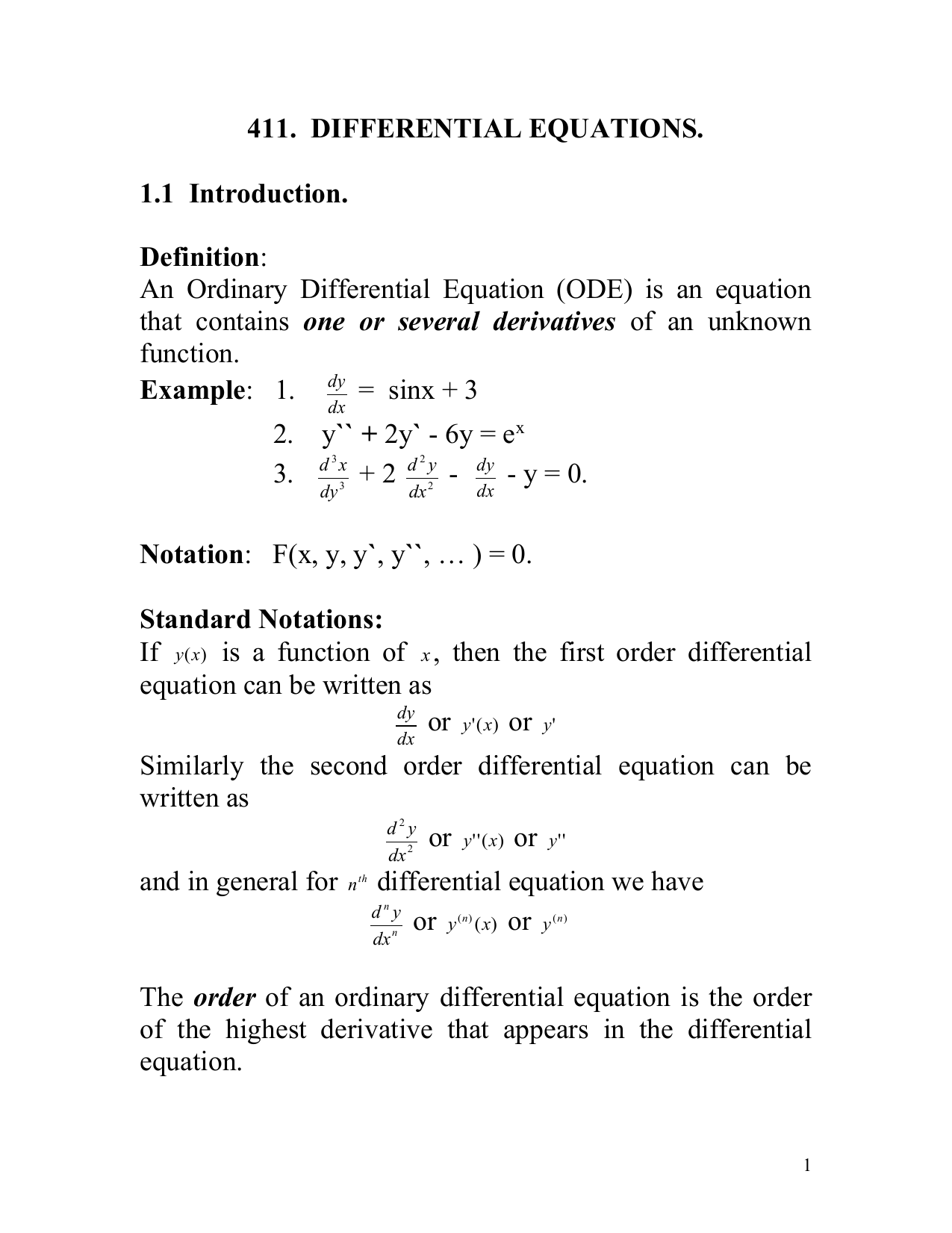


Persamaan Pembezaan
वक्र के परिवार के अंतर समीकरण `y=e^x(AcosxBsinx),` कहा पे `A` तथा `B` मनमानी स्थिरांक हैं Doubtnut is better on App Paiye sabhi sawalon ka Video solution sirf photo khinch kar Open App Continue with Mobile Browser Books Physics NCERT DC Pandey Sunil Batra HC Verma Pradeep ErrorlessAnswered by Daniel R ∫ (ln(x)/(x*(1ln(x))^2) dx Answered by Jack B We're here to help 44 (0) 3 773 60 support@mytutorcouk Contact us Company Information About us Careers Blog Subject answers Become a tutor Schools Staying safe online FAQs Using the Online Lesson Space Testimonials &वक्र `y=e^(x)(acosx bsinx )` का अवकल समीकरण ज्ञात कीजिए । Doubtnut is better on App Paiye sabhi sawalon ka Video solution sirf photo khinch kar Open App Continue with Mobile Browser Books Physics NCERT DC Pandey Sunil Batra HC Verma Pradeep Errorless Chemistry NCERT P Bahadur IITJEE Previous Year Narendra Awasthi MS Chauhan
10/12/19 · Ex 93, 5 Form a differential equation representing the given family of curves by eliminating arbitrary constants 𝑎 and 𝑏 𝑦=𝑒^𝑥 (𝑎 cos〖𝑥𝑏 sin𝑥 〗 ) Since it has two variables, we will differentiate twice 𝑦=𝑒^𝑥 (𝑎 cos〖𝑥𝑏 sin𝑥 〗 ) Differentiating Both Sides wrt 𝑥 𝑑𝑦/𝑑𝑥=𝑑/𝑑𝑥 𝑒^𝑥The Correct Answer Is Xe^x (AcosxBsinx) Question Y'' 2y' 2y = E^x Sin X A Clear Solution Would Be Great The Correct Answer Is Xe^x (AcosxBsinx) This problem has been solved!If y = e –x (Acosx Bsinx), then y is a solution of 2 2dydy dy dy (A) 2 (B) 2 −2 2y = 0 dxdx dx dx 2 2dydy dy(C) 222y 0 (D) 2 2y =0 dxdx dx 38 The differential equation for y = Acos αx Bsin αx, where A and B are arbitrary constants is 2 2dy 2 dy 2(A) 2 y 0 (B) 2 y 0 dx dx 2 2dy dy(C) 2 y 0 (D) 2 y 0 dx dx 39 Solution of differential equation xdy – ydx = 0 represents (A)a
Please check is this differential equation nfor y=ex(acosxbsinx) View Raw Image NCERT Solutions;Question Find The Differentialequation Of The Family Of Curves Y=(e^x)(AcosxBsinx) Where A And Bare Arbitrary Constants This problem has been solved!Acosx Bsinx with derivative y 2e 2x Acosx Bsinx e 2x Asinx osx The initial conditions give the equations 1 2 A 1 2A B, or A 1 B 1, so the solution is y e x cosx sinx 5 Solve y y 0 with the initial values y 2 1 y 2 2 Answer The auxiliary equation r2 r 2 0 has the roots r 0 1, so the general solution is y A Bex The initial conditions give the equations 1 A Be 2 Be 2, so B 2 e A 1, and



Plus Two Maths Chapter Wise Questions And Answers Chapter 9 Differential Equations A Plus Topper



The Differential Equation Of The Family Of Curves Y E X Acosx Bsi
FP2 FP2 exercise 5f question 7!!26/04/12 · y = e^x (AcosxBsinx) y = 1/e^x (AcosxBsinx) Diff both sides wrt x use d/ddx(uv) formula dy/dx = 1/e^x os(x)Asin(x) (AcosxBsinx) (1/e^x)27/05/11 · dy/dx = ((acosx bsinx)x (asinx bcosx)) e^x (acosx bsinx) = ((abx)cosx (bax)sinx) e^x (acosx bsinx) Source (s) Maths student myself



Second Order Derivatives In Continuity And Differentiability Class 12 Maths Geeksforgeeks


Tinkutara Equation Editor Math Forum Question
Example y′′ y = ex Try y(x) = Aex and on substitution into the differential equation we find that 2Aex = ex and so the particular integral is y p(x) = 1 2 ex Example y′′ −3y′ 2y = sinx Try y = Asinx osx, y′ = Acosx − Bsinx, y ′′ = −Asinx − osx On substitution into the differential equation, we find (A 3B)sinx (B − 3A)cosx = sinx and so A = 1 10Section 1 Theory 3 1 Theory In this Tutorial, we will practise solving equations of the form a d2y dx2 b dy dx cy = 0 ie second order (the highest derivative is of second order),18/06/17 · # y = e^x(acosx bsinx) # Where the constants #a# and #b# are to be determined by direct substitution and comparison Differentiating wrt #x# (using the product rule) we get # y' = e^x(asinx bcosx) e^x(acosx bsinx) # # \ \ \ = e^x(acosx asinx bcosx bsinx) # Differentiating again wrt #x# (using the product rule) we get



Solutions For Additonal Problems In Homogeneous And Non Homogeneous Differential Euations Equations Differential Equations



7 Find Differential Equation See How To Solve It At Qanda
I've found the complementary integral and got y=e^x(Acosx Bsinx) but I wasn't sure what to use to find my particular integral!24/02/ · Form a differential equation representing the given family of curves by eliminating arbitrary constant a and b y = e^x (acosx bsinx)Most interesting topic in further maths username Badges 4 Rep?



Plus Two Maths Chapter Wise Previous Questions Chapter 9 Differential Equations Hsslive



Example 2 Verify That Y E 3x Is A Solution Of Y Y 6y 0
07/05/19 · Find the value of a and b such that lim x → 0 (x(1 acosx) bsinx)/x^3 = 1 asked May 8, 19 in Mathematics by Nakul ( 701k points) differential calculusLogin Create Account Class12science » Maths form a differential equation for the curve equation y = e^x(Acosx Bsinx) Share with your friends Share 0 The given equation is y = e x A cos x05/03/18 · But when I put y h and y p together, it doesn't look like the right solution (y=ex (1/6x 3x1)1) I don't understand how to get the x and 1 aswell I've done so many similar problems, I don't know why this one is so hard for me Mar 5, 18 Admin #6 M MarkFL Administrator Staff member Feb 24, 12 13,775 ToastIQ said I don't know if I'm missing out on something here



Pdf 0 Differentiation Rules 3 1 Derivatives Of Polynomials And Exponential Functions Hae Ri Han Academia Edu



Method Of Undetermined Coefficients
Y= Acosx Bsinx_____(6) sub (6) in (4) to get the value of x therefore Dyx=0 implies –x = Dy x = Dy x = D(AcosxBsin x) x = A sin x B cos x Therefore the solution of the given equation is y = Acosx Bsinx x = A sin x B cos x 13 Find the particular integral of (D 22D5)y= e x sin 2x ANS PI= e x sin2x/f(D)Try Edexcel FP2 16 June Question 4ii HELP?Section 1 Theory 4 A trial solution of the form y = Aemx yields an "auxiliary equation" am2 bmc = 0, that will have two roots (m 1 and m 2) The general solution y
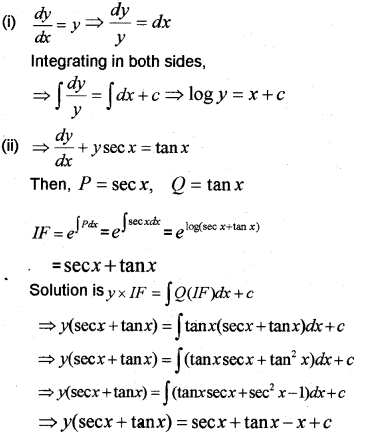


Plus Two Maths Chapter Wise Previous Questions Chapter 9 Differential Equations A Plus Topper



Solved Which One Is The Differential Equation If Its Solu Chegg Com
Find the differential equation representing the curve y = e − x a x b, where a and b are arbitrary constants View solution Eliminating the arbitrary constants B and C in the expression y = 3 C 2 (C x − 1) 3 / 2 B, we get View solution Form the differential equation of the family of parabolas having vertex at origin and axis along positive yaxis View solution The differentialQuestion 12 Show that y=e x (AcosxBsinx) is the solution of the differential equation d 2 y/dx 22(dy/dx)2y= 0 Solution we have, y=e x (AcosxBsinx) (i) Differentiating equation (i) wrt x, dy/dx=e x (AcosxBsinx)e x (Asinxosx) (ii) dy/dx=e x (AB)cosx(AB)sinx (iii) Again differentiating equation (ii) wrt x, d 2 y/dx 2 =e x (AcosxBsinx)e x (Asinxosx)e x (See the answer Find the differentialequation of the family of curves y=(e^x)(AcosxBsinx) where A and Bare arbitrary constants Expert Answer 100% (1 rating) Previous question Next question Get more help from
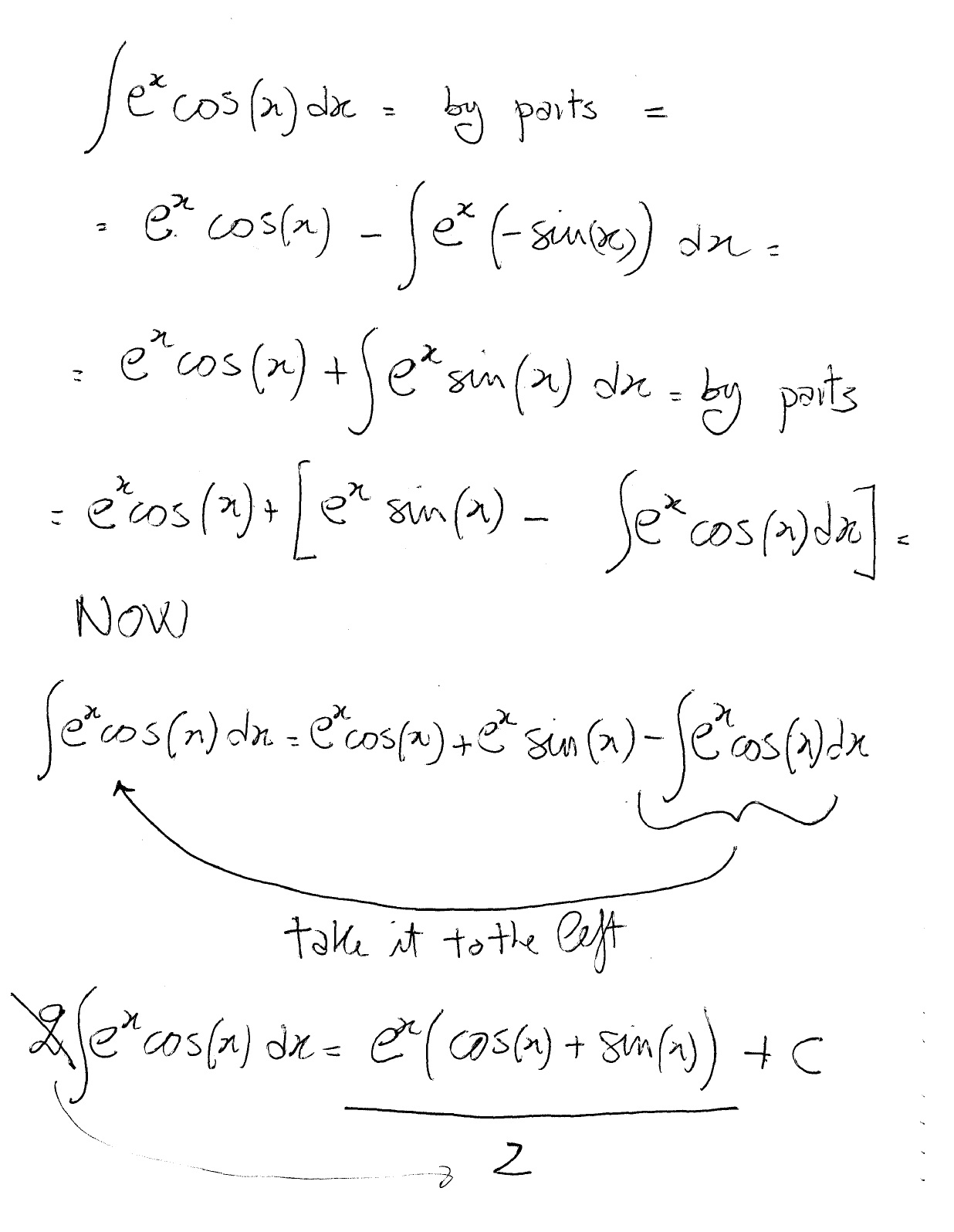


How Do You Find The Integral Of E X Cosx Dx Socratic



For Given Below Verify That The Given Function Implicit Or Explicit Is A Solution Of The Corresponding Differential Equation Y E X Acos X B Sin X D 2y Dx 2 2
23/08/09 · Solve d²y/dx² 2 dy/dx 2y = 3e^(2x) I understand that I have to use the Auxiliary Equation and I get so far but I can't get the right answer I've been on this question for hours and its starting to do my head in!25/11/ · = Acosx – Bsinx Again, we will differentiate further to find its second derivative, d 2 y/dx 2 = d/dx (dy/dx) = d/dx (Acosx – Bsinx) = A d/dx (cosx) – B d/dx (sinx) = A(sinx) – B(cosx) = Asinx – osx = (Asinx osx) = y Note d/dx (sinx) = cosx d/dx( cosx) = sinx Example 3 y = logx, Find d 2 y/dx 2?Click here👆to get an answer to your question ️ y = acosx bsinx is the solution of which of the differential equation Join / Login > 12th > Maths > Differential Equations > Formation of Differential Equation > y = acosx bsinx is the s maths y = a cos x b sin x is the solution of which of the differential equation A d x 2 d 2 y y = 0 B d x 2 d 2 y − y = 0 C d x d y y
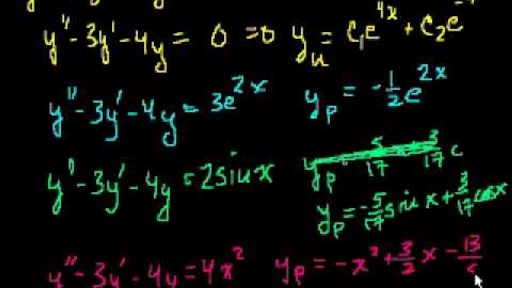


Undetermined Coefficients 4 Video Khan Academy



Practice Questions Calculus Xii
#2 Report 5 years ago #2Get answer Show that y=e^x(A\ cos xBsinx) is the solution of the differential equation (d^2y),(dx^2)2(dy),(dx)2y=0Question from Student Questions,math Ask Questions, Get Answers Menu X



Chapter Four Notes


How To Find The General Solution Of Y 2y E X Sinx Using The Method Of Variation Of Parameters Quora
Free trigonometric equation calculator solve trigonometric equations stepbystepAsk a Question If y = ex (A cos x B sin x), then y is a solution of 1 vote 44k views asked Mar 31,15/04/18 · 1 Graphs of y = a sin x and y = a cos x by M Bourne (a) The Sine Curve y = a sin t We see sine curves in many naturally occuring phenomena, like water waves When waves have more energy, they go up and down more vigorously



1 I



Chapter Four Notes
Trigonometric Identities Sum and Di erence Formulas sin(x y) = sinxcosy cosxsiny sin(x y) = sinxcosy cosxsiny cos(x y) = cosxcosy sinxsiny cos(x y) = cosxcosy sinxsiny11/11/ · y = e x (acosx 6sinx), a and b are arbitrary constantsY=e^x(acosxbsinx) Class 12 Maths Find antiderivative of e^2x Class 12 Maths solve ∫x2/√(4x−x^2) Class 12 Maths Show that the function ( f mathbf{R} rightarrow ) Ix ( in mathbf{R}1 Class 12 Maths > Recent Questions Suppose a girl throws a die If she gets a 5 or 6, she tosses a coin three times and notes the numbe Maximise ( mathbf{Z} ) a ( 3 x4 y ) subject



If Y Ex Sin X Prove That D2y Dx2 2 Dy Dx 2y 0 Explain In Great Detail Mathematics Topperlearning Com 5p09j033



Persamaan Pembezaan
The answer is y= e^x(Acosx Bsinx) 3/2e^(2x) Can anyone please explain how to get the above answer?See the answer y'' 2y' 2y = e^x sin x A clear solution would be great The correct answer is xe^x (AcosxBsinx) Best Answer 100% (1 rating) Previous question Next question Get more help fromWould it be y=lamdaE^mx or y=lamdaE^x 0 reply Not what you're looking for?
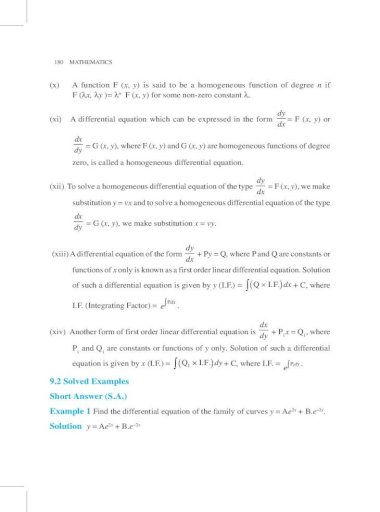


Unit 9 Differential Equations



What Constants Are A And B Such That The Function Y Asin X os X Satisfies The Differential Equation Y Y 8y Sin X Quora
Solution Given that, y = logx Then first derivative will be, dy/dx = dLogin Create Account Class12science » Maths Please check is this differential equation nfor y=e x (acosxbsinx) View Raw Image" Share with your friends Share 3 We have, y = e x a cos x b sin xAnswer to Solution of (D2 1)y = 0 is _____ (a) y = (Ax B) e^x (b) y = Acosx Bsinx (c) x = (Ay B) e^y (d) y = Ae^x In this lesson, we'll look at formulas and rules for differentiation
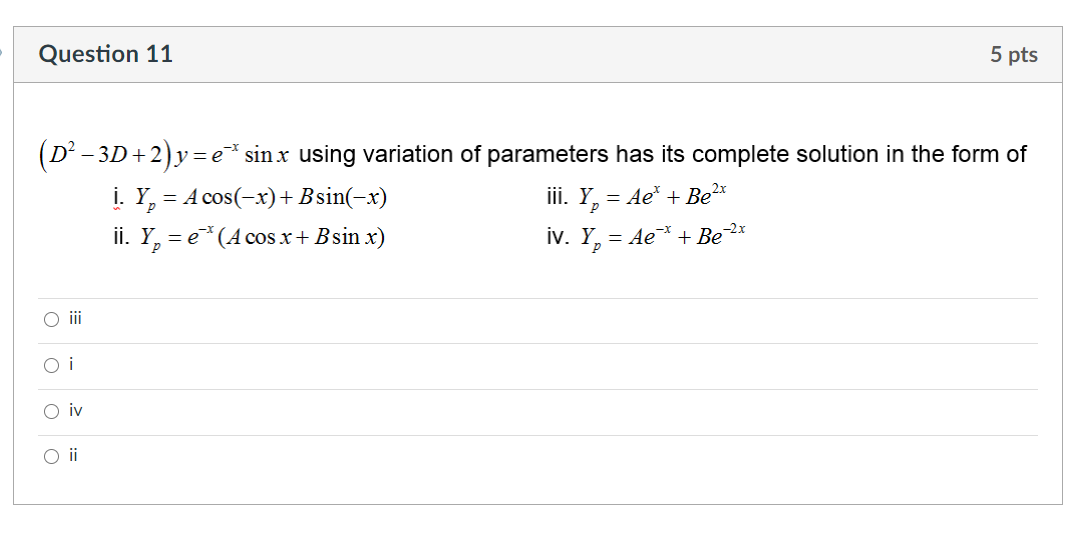


Solved Question 11 5 Pts D2 3d 2 Y E Sinx Using Varia Chegg Com



The Order Of The Differential Equation Whose Solution Is Given By Y C 1 X Left C 2 C 3
12/03/21 · Davneet Singh is a graduate from Indian Institute of Technology, Kanpur He has been teaching from the past 10 years He provides courses for Maths and Science at TeachooShow that any fuction y(t)=acosxbsinx ,satisfied the differential equation y^"wy=0 and also find the value of (a) and (b) 132,533 results math Consider the differential equation dy/dx = 1 (y^2/ x) Let y = g(x) be the particular solution to the differential equation dy/ dx = 1 (y^2/ x) with initial condition g(4) = 2 Does g have a relative minimum, a relative maximum, or neither atY = e−x(AcosxBsinx)− 6 85 cos3x− 7 85 sin3x (d) Characteristic equation of the homogeneous problem is m2 6m 8 = 0, ie (m4)(m2) = 0 with roots −4 and −2 so that the complementary solution is y c = Ae −4 xBe 2 The right hand side of the differential equation is 3e−2x The complementary solution



Find Out The Differential Equation Of Y Acosx 2 Bsinx 2 Youtube


Y E 9 A Y K X Www Qiqidown Com
31/03/18 · If y = ex (A cos x B sin x), then y is a solution of (a) d2y/dx2 2dy/dx = 0 (b) d2y/dx2 2 d2y/dx2 2 dy/dx 2y = 0 (d) d2y/dx2 2y = 0 Login Remember Register;10/01/19 · Mathematics 243 Note The order of a differential equation representing a family of curves is the same as the number of arbitrary constants present in the equation corresponding to the family of curves10(a) Find the differential equation of the curve y=e–x(AcosxBsinx), A, B are parameters (b) Solve 1 1 0 x x e dx e dyy y x y 23 11Solve tan 2 2 1 1 1 dy e x y dx x x 1 5 12Find the general and singular solution of (1 ), dy y px ap p p dx


Tinkutara Equation Editor Math Forum Question



The Differential Equation For Y E X Acosx Bsinx Is Youtube
Solve your math problems using our free math solver with stepbystep solutions Our math solver supports basic math, prealgebra, algebra, trigonometry, calculus and more



Ordinary Differential Equations Differential Equations Ordinary Differential Equation



Plus Two Maths Chapter Wise Previous Questions Chapter 9 Differential Equations Hsslive Guru



Q The Solution Of D2 1y 0satisfying The Condition Y0 1y U03c02 2 Is Cosx 2 Sinx Cosx Course Hero
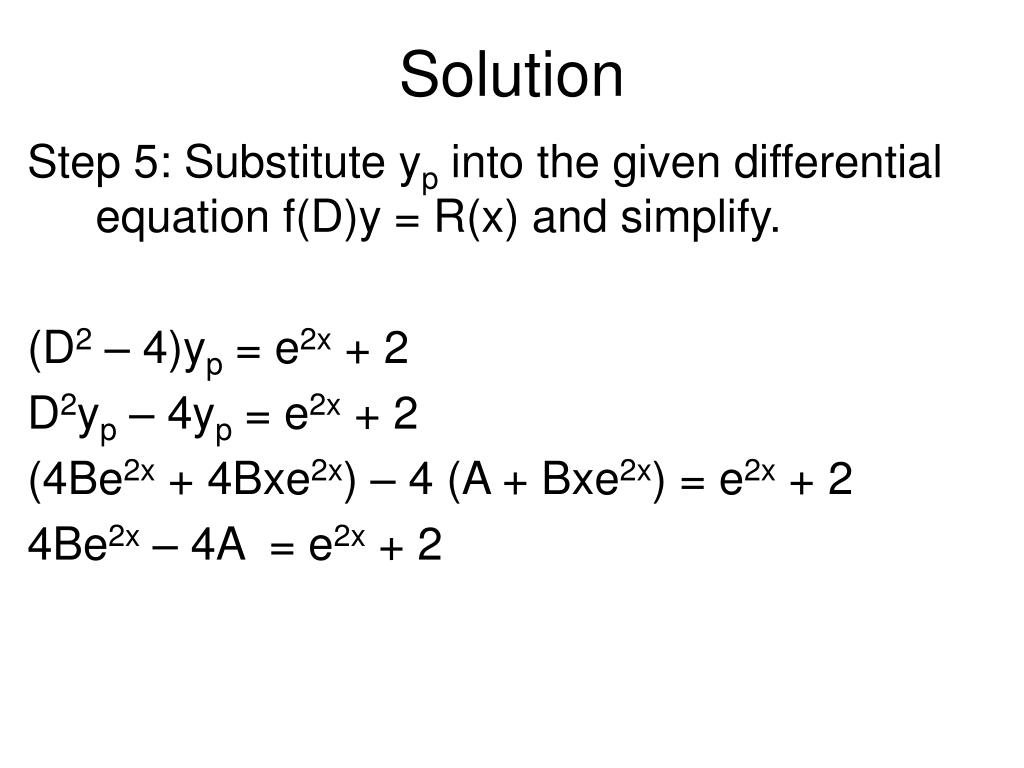


Ppt The Method Of Undetermined Coefficients Muc Powerpoint Presentation Id



Lista De Exercicios Iii Equacoes Diferenciais Ordinarias 2



Verify That Y E X Acosx Csinx Is A Solution Of The Differential
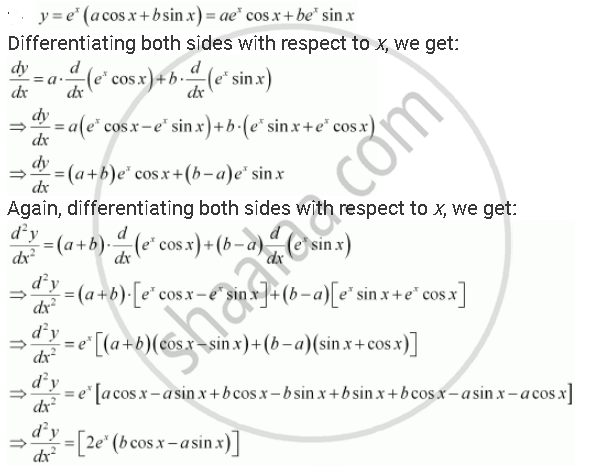


For Given Below Verify That The Given Function Implicit Or Explicit Is A Solution Of The Corresponding Differential Equation Y E X Acos X B Sin X D 2y Dx 2 2



वक र Y E X Acosx Bsinx क अवकल सम करण ज ञ त क ज ए Youtube



Undetermined Coefficients 2 Video Khan Academy



Form A Differential Equation Representing The Given Family Of Curves By Eliminating Arbitrary Constants A And B Y Ex A Cos X B Sin X Mathematics Shaalaa Com
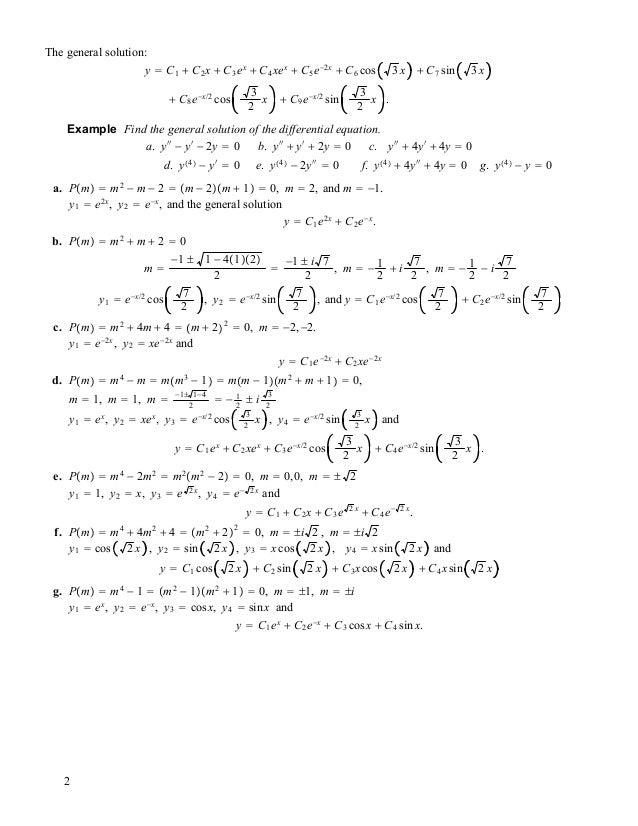


Documents Mx Eduv


If Y E X A Cos X B Sin X Then Y Is A Solution Of Studyrankersonline
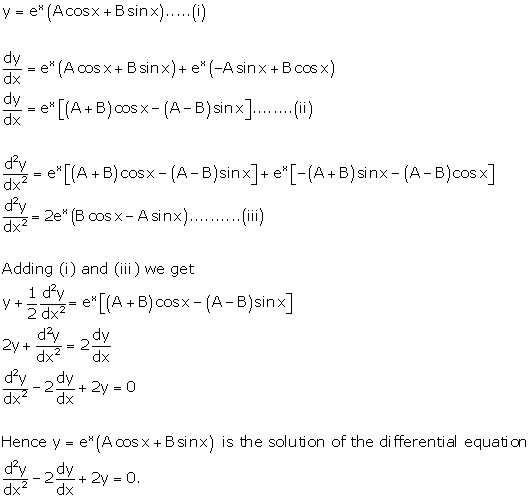


Chapter 22 Differential Equations Solutions For Class 10 Mathematics Maharashtra Topperlearning



Q The Solution Of D2 1y 0satisfying The Condition Y0 1y U03c02 2 Is Cosx 2 Sinx Cosx Course Hero


Wbjee Math Questions And Answers Helpyout
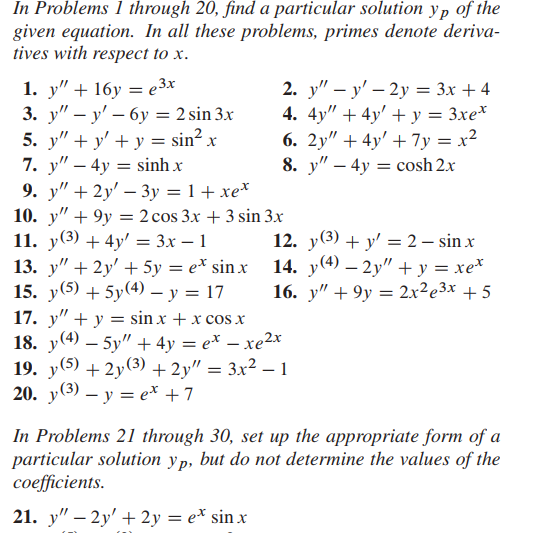


Solved Question 9 And 21 Answer 9 Yp X 1 3 1 16 2x Chegg Com
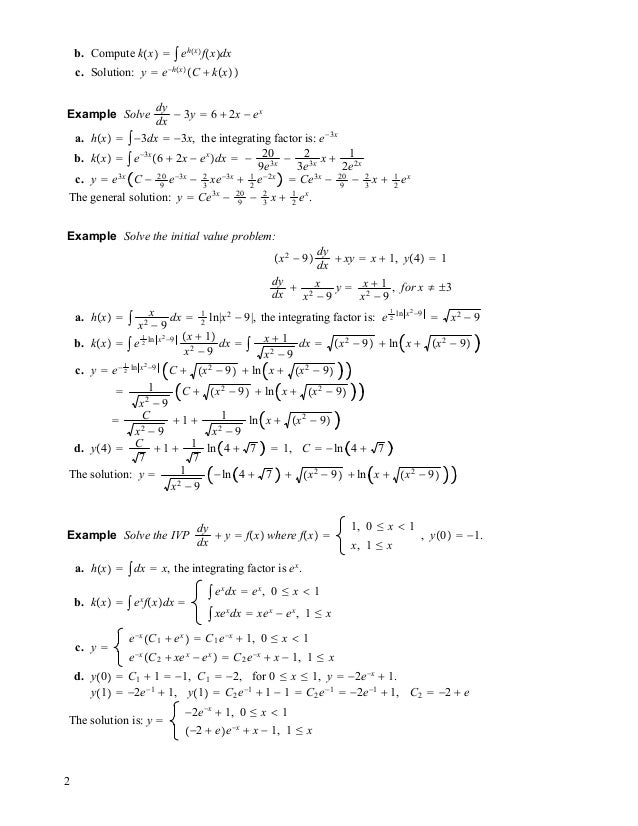


Documents Mx Eduv



If Y E X Sinx Show That D 2y Dx 2 2e X Cosx Brainly In


If Y E X A Cos X B Sin X Then Y Is A Solution Of Studyrankersonline



Lista De Exercicios Iii Equacoes Diferenciais Ordinarias 2



Week 3 Functions Continued Flashcards Quizlet



Iit Jee Differential Equations The Differential Equation Of The Family Of Curves Y E X Acosx Bsi Youtube



The Differential Equation Which Represents The Family Of Curves Y C1e C2x Where C1 And C2 Are Arbitrary Constants Is
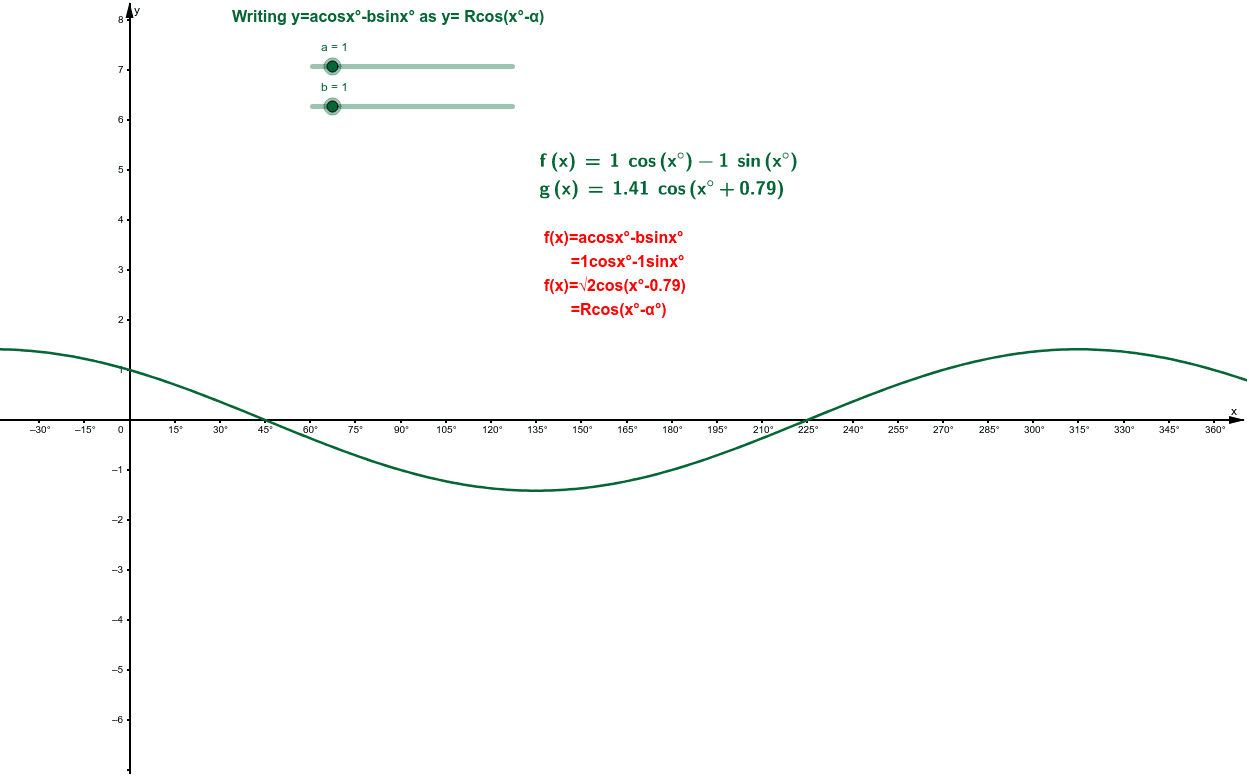


Writing Y Acosx Bsinx As Y Rcos X A Geogebra
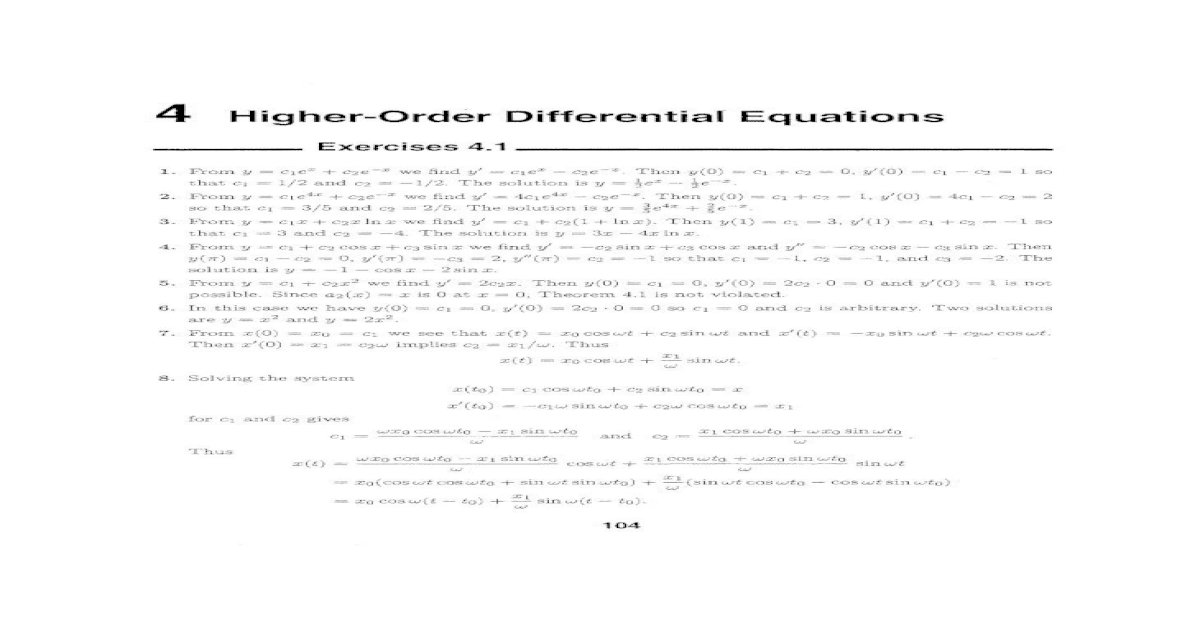


Cap 4 Pdf Document
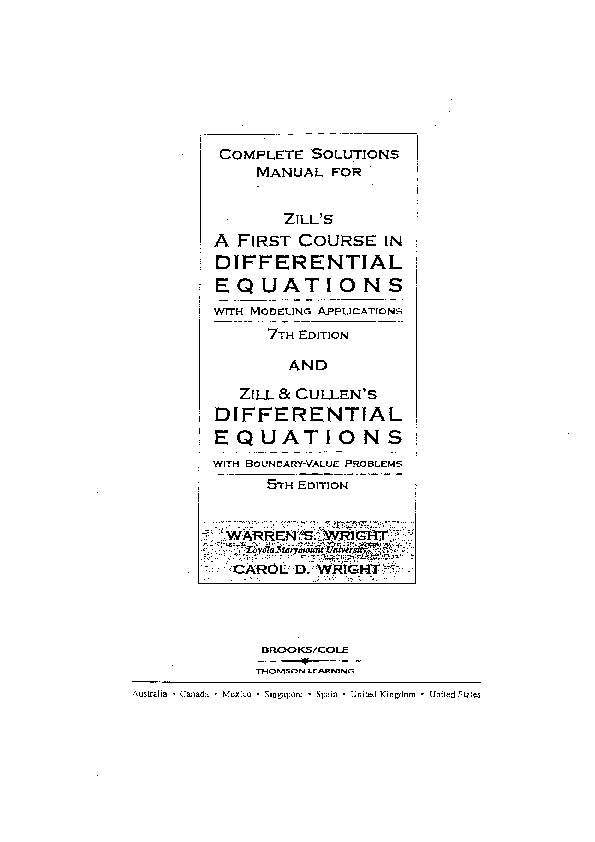


Pdf Complete Solutions Differential Equations With Modeling Applications Differential Equations With Boundary Value Problems 5th Edition Juan Carlos Becerra Linares Academia Edu


Tinkutara Equation Editor Math Forum Question



Ncert Solutions For Class 12 Maths Chapter 9 Differential Equations Ex 9 3



Ecs Question Bank E


If Y E X Sinx Cosx Then Show That D 2y Dx 2 2dy Dx 2y 0 Sarthaks Econnect Largest Online Education Community


I Y A E X B E X X 2 Ii Y E X Acosx Bsinx Sarthaks Econnect Largest Online Education Community
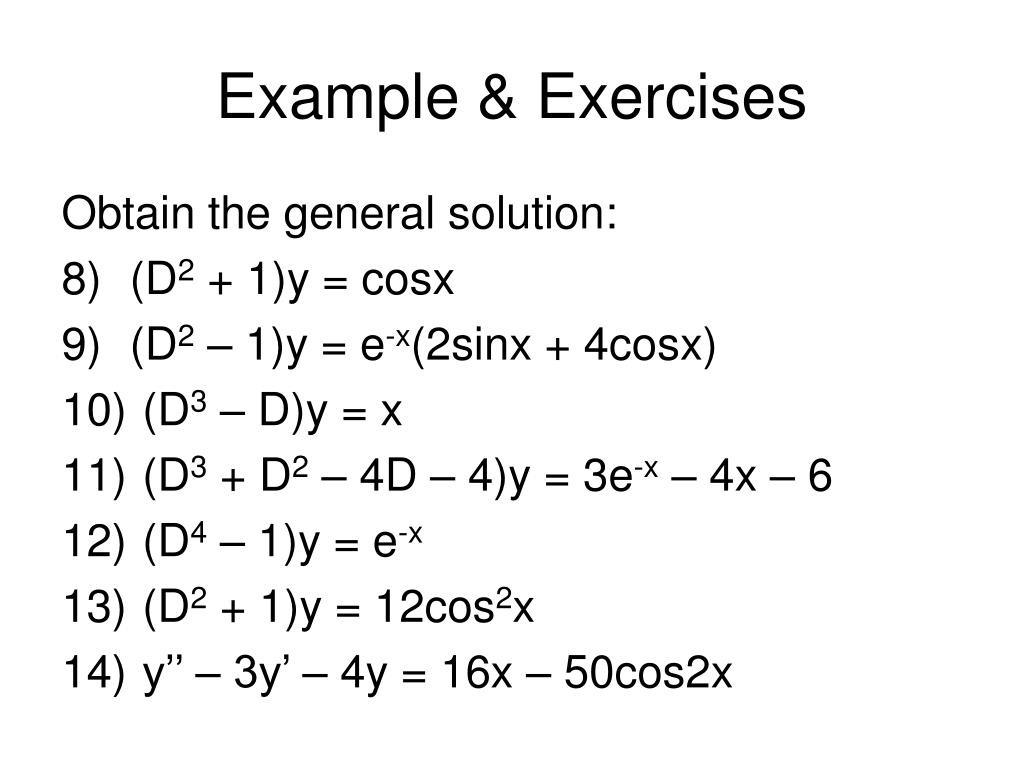


Ppt The Method Of Undetermined Coefficients Muc Powerpoint Presentation Id



The Differential Equation For Y E X Acosx Bsinx Is



In Each Of The Exercises 1 To 5 Form A Differential Equatio Scholr



Ex 9 3 5 Form Differential Equation Y Ex A Cos X B Sin X



Differential Equations



Verify That Y E X Acosx Csinx Is A Solution Of The Differential



The Method Of Undetermined Coefficients



Differential Equations For Dummies Pages 1 250 Flip Pdf Download Fliphtml5



What Is The General Solution For Y 2y 3y E X Cos X Quora


Show That Y E X A Cos X B Sin X Is The Solution Of The Differential Equation D 2y Dx 2 2 Dy Dx 2y 0 Sarthaks Econnect Largest Online Education Community



Ex 9 3 5 Form Differential Equation Y Ex A Cos X B Sin X



The Differential Equation Of The Family Of Curves Y E Acos X Scholr



Mathematics Session Differential Equations 1 Session Objectives Differential Equation Order And Degree Solution Of A Differential Equation Ppt Download


コメント
コメントを投稿